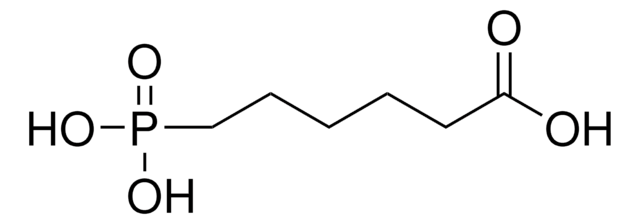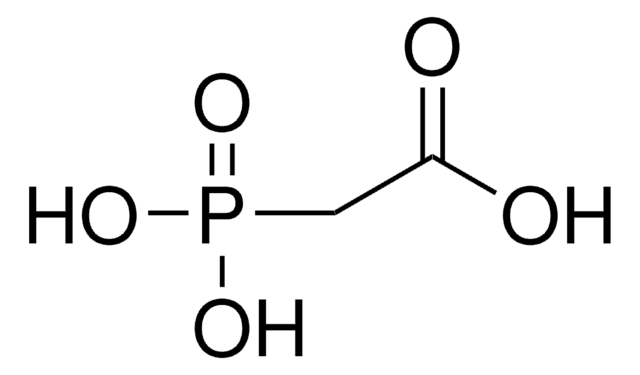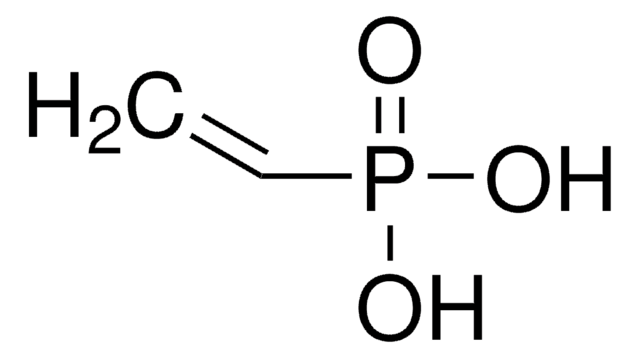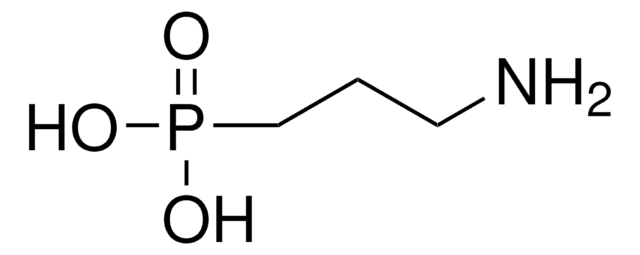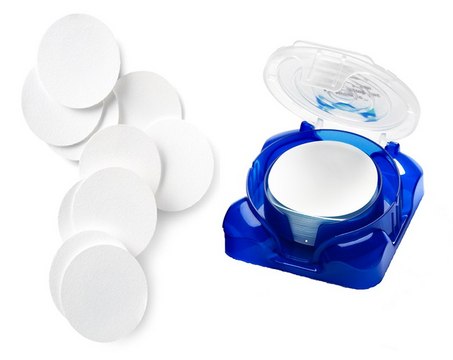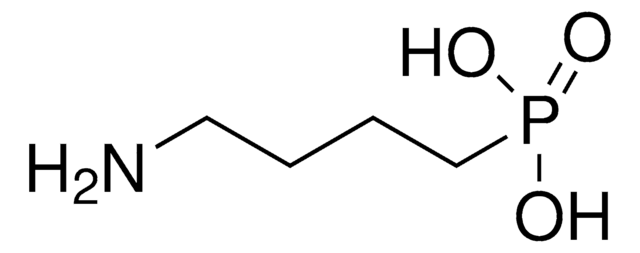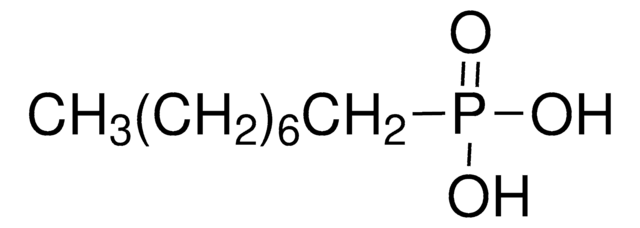228559
3-Phosphonopropionic acid
technical grade, 94%
Synonym(s):
2-Carboxyethanephosphonic acid
Sign Into View Organizational & Contract Pricing
All Photos(2)
About This Item
Linear Formula:
(HO)2P(O)CH2CH2COOH
CAS Number:
Molecular Weight:
154.06
EC Number:
MDL number:
UNSPSC Code:
12352100
PubChem Substance ID:
NACRES:
NA.22
Recommended Products
grade
technical grade
Quality Level
Assay
94%
form
solid
functional group
carboxylic acid
SMILES string
OC(=O)CCP(O)(O)=O
InChI
1S/C3H7O5P/c4-3(5)1-2-9(6,7)8/h1-2H2,(H,4,5)(H2,6,7,8)
InChI key
NLBSQHGCGGFVJW-UHFFFAOYSA-N
Looking for similar products? Visit Product Comparison Guide
Application
3-Phosphonopropionic acid was used to functionalize the bulk phosphate glass surface.
Signal Word
Danger
Hazard Statements
Precautionary Statements
Hazard Classifications
Eye Dam. 1 - Skin Corr. 1B
Storage Class Code
8A - Combustible corrosive hazardous materials
WGK
WGK 3
Flash Point(F)
302.0 °F - closed cup
Flash Point(C)
150 °C - closed cup
Personal Protective Equipment
dust mask type N95 (US), Eyeshields, Gloves
Choose from one of the most recent versions:
Already Own This Product?
Find documentation for the products that you have recently purchased in the Document Library.
M S Hasan et al.
Journal of biomedical materials research. Part A, 101(11), 3301-3310 (2013-08-29)
Fully resorbable phosphate glass fiber reinforced polymer composites have shown real potential for replacing some of the existing metallic bone fracture fixation devices. However, some of these composites have not provided suitable mechanical strength profiles over the required healing period
Charles E McKenna et al.
Journal of medicinal chemistry, 53(9), 3454-3464 (2010-04-17)
3-(3-Pyridyl)-2-hydroxy-2-phosphonopropanoic acid (3-PEHPC, 1) is a phosphonocarboxylate (PC) analogue of 2-(3-pyridyl)-1-hydroxyethylidenebis(phosphonic acid) (risedronic acid, 2), an osteoporosis drug that decreases bone resorption by inhibiting farnesyl pyrophosphate synthase (FPPS) in osteoclasts, preventing protein prenylation. 1 has lower bone affinity than 2
Magdalena Osial et al.
Nanomaterials (Basel, Switzerland), 8(6) (2018-06-15)
The exceptional magnetic properties of superparamagnetic iron oxide nanoparticles (SPIONs) make them promising materials for biomedical applications like hyperthermia, drug targeting and imaging. Easy preparation of SPIONs with the controllable, well-defined properties is a key factor of their practical application.
Serena Donnini et al.
Proteins, 76(1), 138-150 (2008-12-18)
When estimating binding affinities of a ligand, which can exists in multiple forms, for a target molecule, one must consider all possible competing equilibria. Here, a method is presented that estimates the contribution of the protonation equilibria of a ligand
H T Schmidt et al.
Journal of microencapsulation, 23(7), 769-781 (2006-11-25)
Hollow calcium phosphate nanoparticles capable of encapsulating poorly water-soluble molecules were produced by self-assembly. Previously reported were solid calcium phosphate nanoparticles and water-filled calcium phosphate nanocapsules suited for encapsulating mostly hydrophilic, but not hydrophobic compounds. Here, calcium phosphate was deposited
Our team of scientists has experience in all areas of research including Life Science, Material Science, Chemical Synthesis, Chromatography, Analytical and many others.
Contact Technical Service